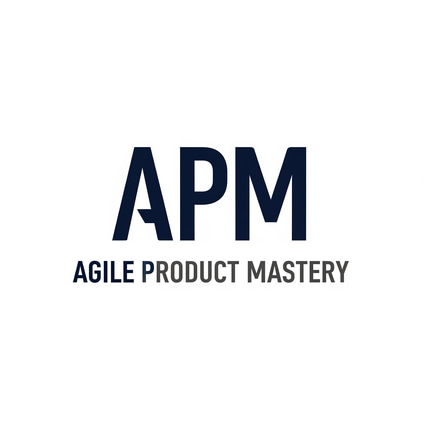The Rise of AI in Product Management — What Every Agile Leader Needs to Know
Discover how AI is transforming the role of Agile Product Managers. Learn how to adapt, thrive, and lead in a world where intelligent tools and automation are reshaping product development.
AGILE PRODUCT MANAGEMENTARTIFICIAL INTELLIGENCEPRODUCT STRATEGY
Written by: Matt Gregory - Founder Agile Product Mastery
6/3/20254 min read


Introduction: A New Era for Agile Product Leaders
Artificial Intelligence is no longer a buzzword — it’s the reality shaping how modern businesses operate. From automated customer service to advanced data analysis, AI has rapidly become a staple in nearly every corner of the digital economy.
For Agile Product Managers (APMs), the emergence of AI offers both a wake-up call and an unprecedented opportunity. Agile frameworks were built to thrive in uncertainty, but even they didn’t anticipate a future where machines could brainstorm user stories, write product specs, analyze customer feedback, and even suggest prioritization strategies.
This three-part blog series explores how AI is transforming product management. In this first post, we’ll explore the evolution of AI in the product space, its immediate impacts on Agile ways of working, and why every product leader needs to understand this shift — now.
1. The AI Revolution: Why It Matters to Product Managers
Over the past decade, AI has made enormous strides, but the 2020s are proving to be the tipping point. Thanks to foundation models like GPT and real-time analytics powered by machine learning (ML), AI is no longer locked in the data scientist’s lab — it’s in your Slack, Jira, and roadmap tools.
Why should product managers care?
Because AI is starting to take over tasks that were once core to the PM role:
Synthesizing customer feedback
Writing documentation
Analyzing trends
Even shaping early-stage product strategy
And it’s not just automation. It’s acceleration.
AI reduces the time between idea and execution — compressing what used to take weeks into hours. This changes the cadence of Agile. Sprints are faster. Experiments are more data-rich. Teams can build and learn at speeds that were previously unimaginable.
2. Evolving Role of the Product Manager in the Age of AI
The traditional Agile PM juggles many hats: stakeholder communicator, customer advocate, backlog curator, data interpreter, and team leader. With AI entering the picture, the scope is shifting — but not shrinking.
From Juggler to Orchestrator
AI allows PMs to delegate routine and analytical tasks to machines. This enables more strategic focus. Imagine having an AI assistant:
Digest hundreds of user interviews and summarize the top themes
Generate product requirements documents (PRDs) based on a single prompt
Monitor live usage data and recommend priority fixes
PMs become orchestrators of tools and intelligence — rather than manual processors of data.
Cognitive Offloading = Mental Space for Strategy
By offloading “thinking tasks” like clustering survey data or rewriting release notes, AI gives PMs more time to:
Engage deeply with customers
Drive alignment across the business
Anticipate strategic risks
Inspire the team with product vision
In essence, AI is shifting the PM role upward — towards higher-order thinking, storytelling, and decision-making.
3. Core Use Cases: How AI is Being Applied in Product Today
Let’s explore how Agile product teams are already using AI to amplify their workflows. These aren’t future predictions — they’re active, practical applications:
Backlog Grooming and User Story Writing
AI tools like ChatGPT, Linear’s AI assistant, or Jira AI can analyze epics and auto-generate user stories with acceptance criteria. You can prompt them to rewrite poorly defined stories, add edge cases, or even suggest test scenarios.
Persona and Journey Mapping
Feeding customer data into AI models (e.g. NPS results, support tickets) allows PMs to auto-generate customer personas and empathy maps. This eliminates bias-prone guesswork and ensures segmentation is data-driven.
Prioritization and Forecasting
Using AI for lean analytics allows product teams to identify high-impact features by analyzing correlations between usage data and key outcomes. AI models can even simulate the impact of prioritizing one epic over another based on historical patterns.
Experimentation and A/B Testing
Tools like Optimizely and Statsig now include AI capabilities that monitor experiments in real-time, flag anomalies, and recommend optimal stopping points. PMs no longer need to be stats experts to run smart, statistically valid experiments.
Documentation, PRDs, and Release Notes
AI can auto-generate first drafts of feature specs, internal wikis, and release notes based on a few bullet points or a Jira ticket. Tools like Notion AI, Confluence AI, and Coda AI are turning documentation into a collaborative, intelligent space.
4. Opportunities and Cautions
Opportunities
Speed: AI slashes research, writing, and analysis time
Focus: PMs can prioritize customer conversations and stakeholder alignment
Breadth: Cover more surface area without burning out the team
Inclusivity: Junior team members can participate in more advanced tasks with AI assistance
Cautions
Over-reliance: Just because AI can write a story doesn’t mean it understands the customer
Hallucinations: GenAI models still fabricate when uncertain. Always validate.
Loss of craftsmanship: PMs must stay skilled in the why behind the work, not just the how
Ultimately, the most valuable product managers will be those who can harness AI while still leading with judgement, empathy, and vision.
5. The Product Leader’s Mindset Shift
Product management has always required adaptability. AI just makes it more urgent.
As a product leader, your job isn’t just to manage a backlog or deliver on a roadmap. It’s to shape the future of your product — and now, that future includes intelligent tools that are changing how decisions are made, how work is executed, and how customers are understood.
You don’t need to become an AI engineer. But you do need to:
Stay current on AI capabilities
Experiment with tools
Think critically about ethical AI use
Rethink team roles and workflows
Because AI won’t replace you. But a product manager who uses AI effectively will.
What’s Next: APM + AI Toolkit
In Part 2 of this series, we’ll dive into the top AI tools every Agile PM should be using — and how to integrate them into your sprint cycles, roadmap planning, and customer discovery practices.
TL;DR
AI is fundamentally reshaping how product managers operate in Agile environments
PMs who adopt AI tools can work faster, deeper, and more strategically
The role of PM is shifting from task execution to orchestration and leadership
Risks exist, but the opportunity is immense — and the future is now
Want to keep up to date with all the latest Product Management news, join our community by signing up to our newsletter here
© Agile Product Mastery — Build a career that scales. Not one that burns out.
Powered by Baltimore Advisory Pty Ltd — ABN 97 678 312 475 — All rights reserved
Follow us on LinkedIn
